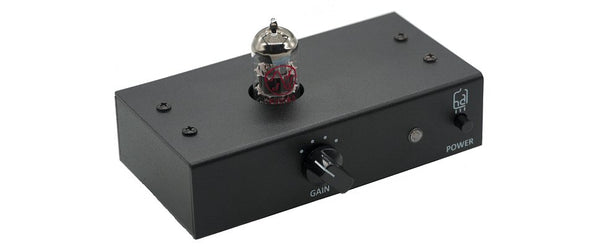Long ago I designed, built, and sold a very nice DAC (Chime), but it was limited to Redbook CD (44.1k) inputs. It sounded glorious, however. Two things I believe set it apart were re-timing of the DAC outputs with a re-created less jitter clock, and a tube gain and output stage (I-V conversion done by resistor, no opamps).
So I decided to finally bring some of that within reach of all the new hi-res DACs and streamers. Not re-clocking, but a tube output stage. Yes, it adds a tiny bit of distortion, but that's exactly what tube magic is! You can live with sterile, boring sound, or you can juice it up.
BARITONE is a vacuum tube buffer designed to warm up your digital audio. The 12AU7 operates at proper high voltage delivering huge headroom and low distortion. Add that tube magic and impart a vintage feel to your tone! Specifications 10Hz to 35kHz bandwidth (-3dB) 15Vrms output voltage (HI) -2...

www.haglabs.com
It only does one thing, permanently sit on the output of your DAC. You can't really use it for anything else...











